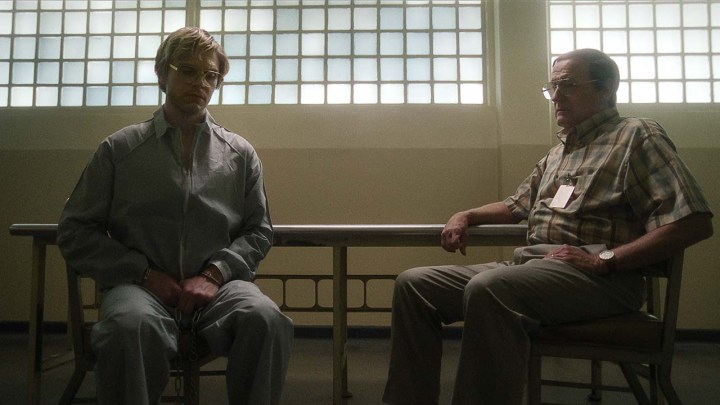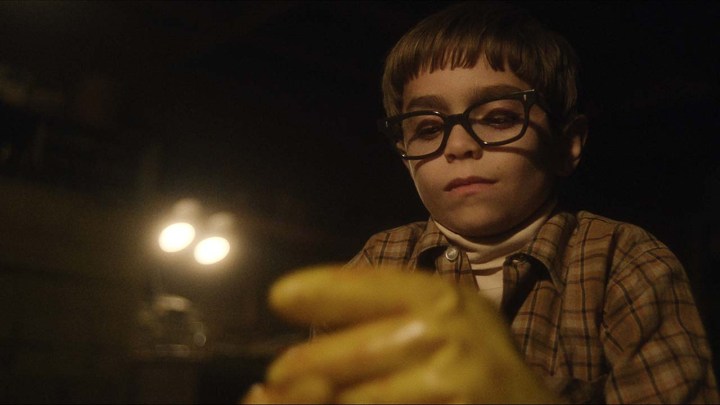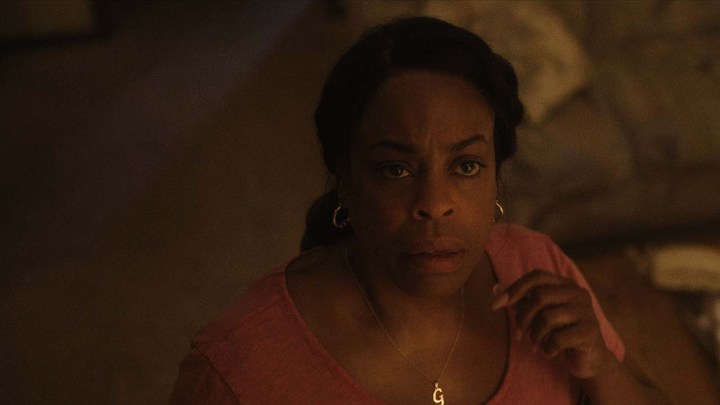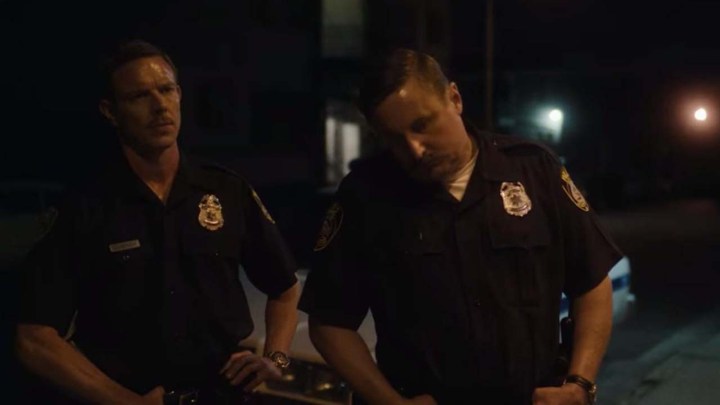There were high hopes for Dahmer – Monster: The Jeffrey Dahmer Story, which released its 10-episode series on Netflix in late September. Headed up by Ryan Murphy, who is behind hits like American Horror Story and American Crime Story, Monster: The Jeffrey Dahmer Story promised to tackle the story of serial killer Jeffrey Dahmer from a different angle. Instead of focusing on Dahmer, the idea was to examine the racial injustices and police incompetence surrounding the case that allowed the heinous acts to go on for as long as they did.
The show has quickly become one of Netflix’s most popular originals, breaking the record for first-week viewing numbers. But it’s also one of the most controversial. Many people have taken issue with the series, its disturbing depictions of events, and the traumatizing re-telling of stories that involved the brutal murder and dismemberment of several young men. Most notably is Rita Isbell, sister of victim Errol Lindsey, whose emotional victim impact statement was recreated, verbatim, for the show, bringing back emotions Isbell did not want to have resurface.
The story is largely centered on facts, highlighting well-known details about Dahmer’s troubled childhood, long-held fascination with death, extreme loneliness, and the rituals he performed in hopes of keeping his victims close, even post-mortem. Among these ritualistic and heinous acts was cooking and consuming some of their body parts. It’s a sensitive story to attempt to tell in a tasteful series.
The spoon-fed story humanizes a killer

Frequent Murphy collaborator Evan Peters captures the essence of the titular character, arguably too well. While the intent was not to make Dahmer come across as a sympathetic character, Peters portrays him as a lost soul who was a victim of his own warped fantasies.
The story flips through various timelines, from Dahmer’s childhood to teenage years, young adulthood, and present day. In each, fans get a glimpse of troubles Dahmer encountered. From the friction in his parents’ marriage to his mother’s mental health struggles, his difficulties fitting in, and overall abandonment issues, it all strikes the wrong chord.
Story angles are also spoon-fed to viewers in obvious ways to somehow explain factors that might have led to the path Dahmer went down. In one flashback scene, for example, Jeff’s father Lionel Dahmer is over the moon when his son expresses an interest in examining roadkill. He believes his son has a genuine fascination with a career in science, a field in which Lionel himself worked. This is juxtaposed by the knowledge that, of course, it was a clear red flag and his father misinterpreted the signs. In another scene, Lionel mentions all of the medications Dahmer’s mother took while pregnant with him, suggesting that they could have altered his brain chemistry in some way.

Other scenes, meanwhile, are delivered for shock value, like Dahmer caressing and kissing a decapitated victim’s head, drinking bags of blood he steals from the blood bank where he once worked, and declaring to a potential victim that he is going to eat his heart. It’s difficult not to include such shocking scenes and dialogue considering much of it really did happen. The show doesn’t take a particularly gory or gruesome angle, but some scenes are difficult to watch, nonetheless.
After drawing the story out over 10 episodes, some of which are painfully slow-moving, the ending fails to provide satisfying closure. One of the things fans most look forward to with true crime series is the information cards at the end that indicate where various players are today, and what has happened since. While Monster: The Jeffrey Dahmer Story provides a pictorial tribute to the victims, there’s not much else beyond that before the credits start rolling. Expect to be left furiously googling the truths, fictions, and “where are they nows” once you’ve finished watching.
The real stars and the race angle

If Monster: The Jeffrey Dahmer Story does anything right, it’s in examining not just Dahmer’s awful acts, but the bigger issues surrounding why he was able to continue committing them for so long.
Niecy Nash does a wonderfully convincing job as Dahmer’s neighbor Glenda Cleveland, who many consider to be a hero. In real life, Cleveland actually lived in an adjacent building, not next door (the character is likely based on a combination of both Cleveland and Dahmer’s real-life nearby apartment neighbor Pamela Bass). The actors who play the victims and their parents and family members also tug on heartstrings, beautifully bringing to life people who were previously only ever seen in photos and stories only ever told about the gruesome things that were done to them, not who they were prior.
One angle that hasn’t been explored in depth in other Dahmer re-tellings, including the 2017 film My Friend Dahmer starring Ross Lynch and 2002’s Dahmer starring Jeremy Renner, is the alleged police incompetence and racism that prevented Dahmer’s capture for so long.
Police officers are continuously seen rebuffing accusations against the young, white male presented to them by young Black men and women like Cleveland. The most jarring is when Cleveland’s daughter and niece call the police after finding escaped victim Konerak Sinthasomphone, drugged and bleeding in the street.

Instead of looking into the situation, checking ID, and Dahmer’s previous record (which already included prior arrests), the officers credulously believe Dahmer’s story that the young boy of 14 is actually his 19-year-old boyfriend who simply had too much to drink. Dahmer later went on to kill the boy and five other victims before being caught.
What’s also examined is that Dahmer was a white man living in a predominantly Black neighborhood, a fact one of the detectives brings up during his post-arrest questioning. Did he choose the neighborhood because it was all he could afford or because he knew he would have vulnerable marks and a better chance at getting away with what he was doing?
The racist angle is brought home with several other infuriating scenes, such as when police imply a young Black accuser shouldn’t judge Dahmer based on prior arrests because “he knows how it is” (meanwhile, the young Black man had actually never before been arrested and rightfully resented the assumption), or when a judge shows no compassion to Konerak Sinthasomphone’s father, instead implying he simply can’t understand the grieving father through his tears and thick Laotian accent.
The political and racial statements the show is trying to make are heard loud and clear, but it’s more angering than cathartic. Injustices occurred and highlighting them so bluntly might not be the best way to honor these victims. It, does, however, encourage a discussion about the potential cost of racism, and that’s a topic worth exploring.
Is Monster: The Jeffrey Dahmer Story worth watching?

Peters does a wonderful job embodying the killer and his odd, eccentric, shy demeanor. He makes Dahmer come across as a sympathetic character who simply doesn’t fit in. That wasn’t the intention, but the tone and handling of the subject matter, particularly that of Dahmer’s relationship with his forgiving father, makes the killer oddly seem like as much a victim as he is a perpetrator.
As a two-hour movie instead of a 10-episode binge, Dahmer – Monster: The Jeffrey Dahmer Story could have been compelling. The slow pacing was designed to tackle the various stages of Dahmer’s life and crimes, and his descent further and further into acting on long-held fantasies and disturbing proclivities. He did, after all, brutally murder, assault, dismember, and even consume 17 different people. That’s a lot of murderous ground to cover, particularly if the goal is to humanize the victims. But the result is disjointed and downright uncomfortable at times.
Monster: The Jeffrey Dahmer Story presents new perspectives even those deeply familiar with Dahmer’s story might not have been aware of. But you will likely get a lot more out of Conversations With a Killer: The Jeffrey Dahmer Tapes, which comes out October 7, also on Netflix. If you’re a fan of true crime and you’re fascinated with serial killers, you won’t be missing out if you wait for that instead.
Dahmer – Monster: The Jeffrey Dahmer Story is now streaming on Netflix.
Editors' Recommendations
- Unsolved Mysteries Volume 3 trailer heralds the show’s return to Netflix
- New Jeffrey Dahmer interviews the basis for Conversations with a Killer series
- Evan Peters on having to go to dark places in Dahmer


